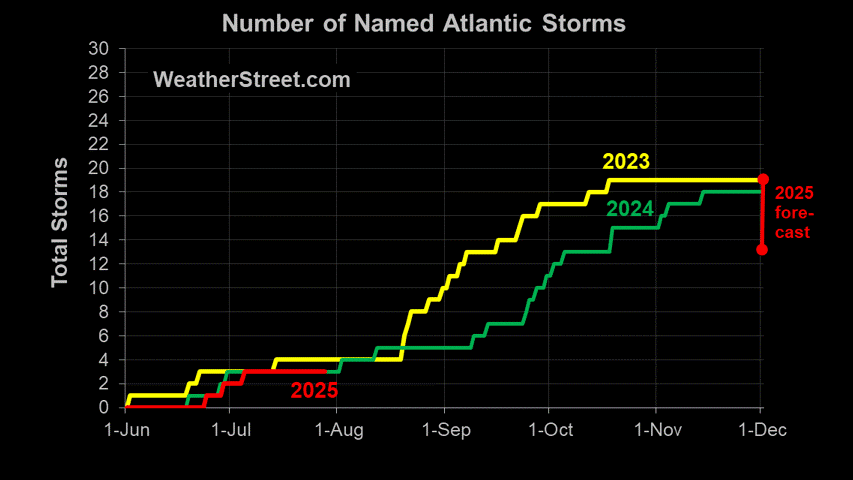Hello again friends. Hurricane season starts in 5 days in the Atlantic basic, Gulf of Mexico and eastern Pacific.
2009 starts my third year with tropical storm tracking on this site. This year will be a little different, though, as I am a landlubber now safely tucked away in the North Georgia hills. I will strive to continually provide accurate and timely information even though I am not in the bullseye of Galveston-Houston. We do still have family and friends in the area and tropical weather is still a passion for me. As I've said before, if researchers from Colorado can have the most consistent and accurate yearly hurricane predictions, then I can certainly track their progress from Georgia.
You know, we certainly cannot control when storms form or where they go. The only thing we can control is how prepared we are and how well we understand the physics of these storms. So I will start this year's blog posts with some blog posts from the Weather Channel's hurricane expert, Dr. Steve Lyons.
Hurricane Season June 1st - Are You Ready? A collection of blog posts by The Weather Channel expert Dr. Steve Lyons.
Steve Lyons Hurricane and Wave Expert, The Weather Channel
May25. , 2009 4:52 am ET
Time to get prepared for the 2009 Pacific and Atlantic Hurricane Season. Hurricane hazards come in many forms: storm surge, high winds, tornadoes, and flooding. This means it is important for your family to have a plan that includes all of these hazards. Look carefully at the safety actions associated with each type of hurricane hazard and prepare your family disaster plan accordingly.
Until then here is selection of blogs written by our own hurricane and wave expert, Dr. Steve Lyons.

Five Toes of the Hurricane FootprintHurricane Rainfall PatternsPreoccupation with Hurricane Maximum WindsWhat Causes Hurricane Surge on the Coast?As far as predictions go,
Tropical Storm Risk (TSR) is predicting an active season for 2009 as of their April predictions. They also point out that their success rate at the April timeframe is rather low. Their prediction is for 15 named storms including 7 - 8 hurricanes and 3 - 4 severe hurricanes.
As many of you know, I typically look to Dr. Phillip Klotzbach and Dr. William Gray both of the University of Colorado for how the year is going to be. They have been steadily dropping their predicitions for the number of storms this season due to the low sea surface temperatues in the North Atlantic this year. These lower than expected water temperatures coupled with a developing El Nino indicate that 2009 may be more mild than the past few years.
Drs. Klotzbach and Gray are predicting an average year with 12 named storms, 7 hurricanes and 2 intense hurricanes (Cat 3 or higher). (pdf)
PROBABILITIES FOR AT LEAST ONE MAJOR (CATEGORY 3-4-5) HURRICANE LANDFALL
ON EACH OF THE FOLLOWING COASTAL AREAS:
1) Entire U.S. coastline - 54% (average for last century is 52%)
2) U.S. East Coast Including Peninsula Florida - 32% (average for last century is 31%)
3) Gulf Coast from the Florida Panhandle westward to Brownsville - 31% (average for last centuty is 30%)
4) Average major hurricane landfall risk in the Caribbean
They are predicting both a fewer number of storms with lower probablility of making landfall AND a lower intensity of those storms that do form. Of course a lower expected number of storms means nothing if the one storm to come ashore hits where you are. Remember the year that Andrew erased Homeland, FL we only had one storm and that didn't hit until September. So as usual the theme is to be prepared.
As the season continues, I will post articles about hurricane preparation. Please put your plan together now, long before a storm forms so that you will be ready when a storm does hit.
Storm Watch with: http://morewhat.com/wordpress/open-trackback-linkfest-haven-weekend-15/, Rosemary's Thoughts, Nuke Gingrich, Woman Honor Thyself, Right Truth, The World According to Carl, DragonLady's World, The Pink Flamingo, Leaning Straight Up, CORSARI D'ITALIA, and Stageleft, thanks to Linkfest Haven Deluxe.













